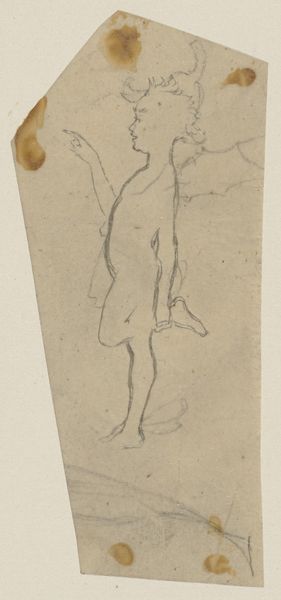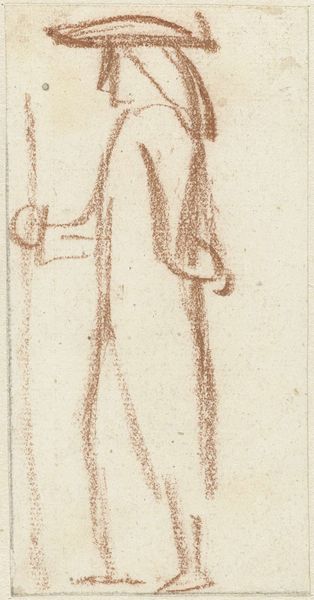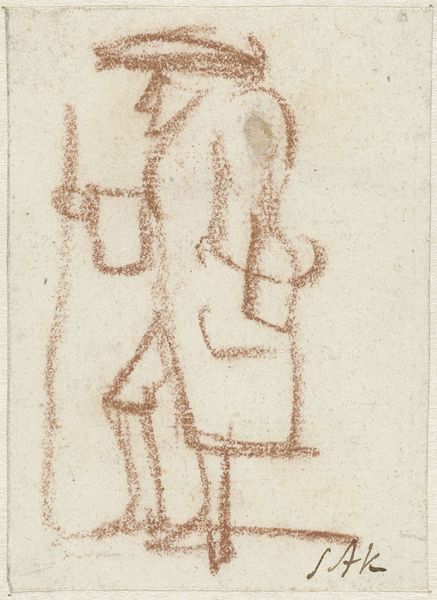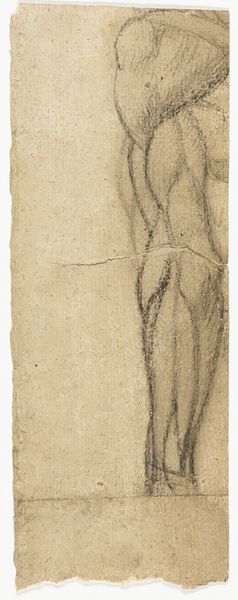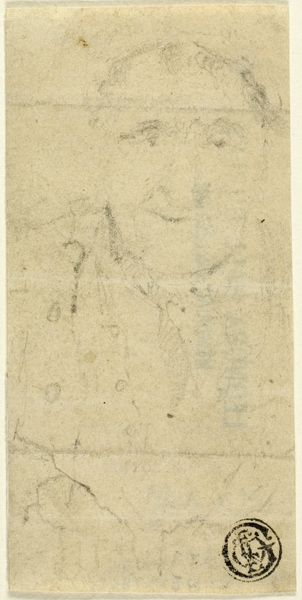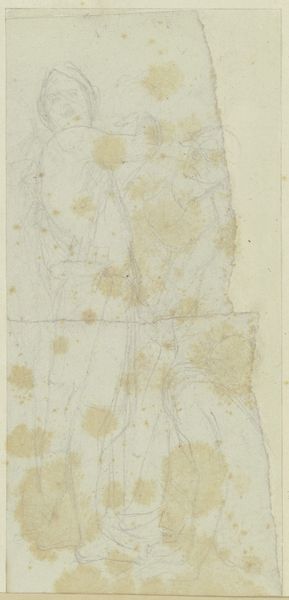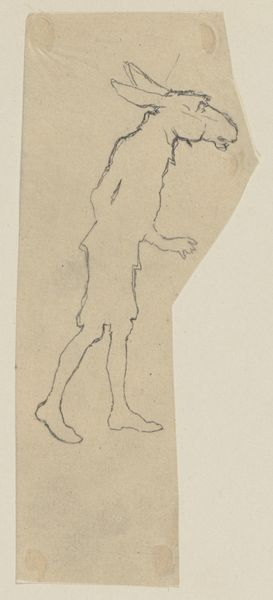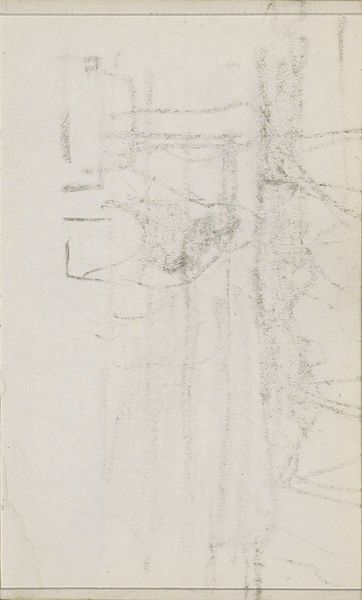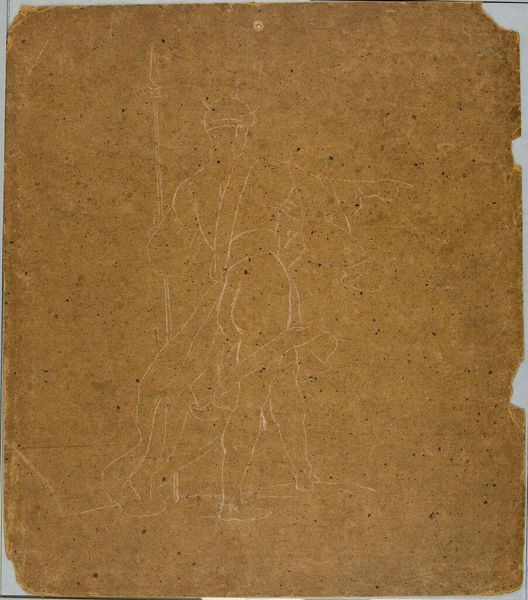
drawing, dry-media, chalk, charcoal
#
portrait
#
drawing
#
toned paper
#
figuration
#
dry-media
#
chalky texture
#
pastel chalk drawing
#
chalk
#
line
#
charcoal
Dimensions: height 83 mm, width 30 mm
Copyright: Rijks Museum: Open Domain
Editor: We're looking at "Schets van een staande figuur" - "Sketch of a Standing Figure" - a chalk drawing by Simon Andreas Krausz, likely created between 1770 and 1825. It's incredibly simple, just lines really, but I’m struck by how much it conveys with so little. What strikes you about this work? Curator: The immediacy of the sketch is captivating, isn’t it? Considering the late 18th, early 19th-century context, it begs the question: was this a preparatory drawing for a larger, perhaps commissioned work? Or was it more of an informal exercise? Its existence, and preservation in our institution, speaks to shifting values around the role of sketching in artistic practice during that period. Editor: That’s interesting. How would the context have changed the way sketches were viewed? Curator: Well, the rise of academies and formal art training in the 18th century started to elevate sketching as a vital tool, moving away from the more hierarchical systems where only finished pieces held real value. So the act of sketching itself becomes validated, and institutions preserve more of these kinds of artworks. I wonder, how does it influence your perception to know this isn't necessarily intended as a finished product? Editor: I guess it makes me appreciate the artist's process more, seeing the bare bones of an idea. Like getting a glimpse behind the curtain. What kind of statement might it have made if Krausz had displayed a sketch like this during his time? Curator: In certain circles, it might have been viewed as progressive, a rejection of formality. In others, perhaps unfinished or amateurish. But it would signal a changing conception of artistic creation. So, where do we place value? Is it only the highly polished artwork shown to the public? What about the preparatory sketch created behind closed doors? Editor: I hadn’t really thought about that shift in values before. It makes you wonder what other hidden processes are behind the artworks we admire today. Thanks, that was really enlightening. Curator: My pleasure. There is always much more going on in and behind a work of art than immediately meets the eye!
Comments
No comments
Be the first to comment and join the conversation on the ultimate creative platform.

